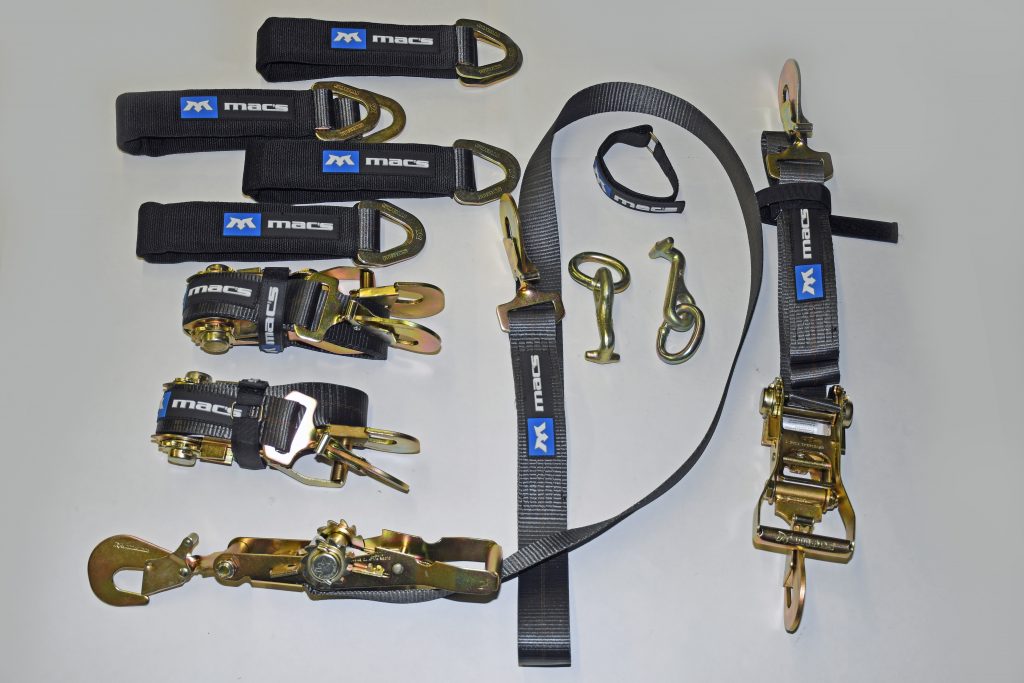
You should always properly secure your vehicle anytime you trailer it to a race or event. It’s not just the smart, safe way to transport your ride, it’s a legal necessity.
And while back in the day, we had to use all sorts of different tie-down methods to affix cars to trailers, now you have some much better options.
Summit Racing has a wide range of different tie-down straps and accessories in its giant online catalog—hundreds of them in fact! I’ve found that some of the best are built by Mac’s Custom Tie-Downs (manufactured in their Sandpoint, Idaho shop). And they’re the focus of this article.
Right up front, you can buy Mac’s tie-downs with flat hooks or in a twisted hook configuration. While a flat snap hook can place a twist in the webbing after installation (in many applications), the twisted snap hook is a perfect choice for many vehicles and trailers—keeping everything lined up perfectly with most anchor points. Both snap hook layouts include Mac’s patented thumb release (see the pics at the bottom of this article), which makes removal a literal snap.
For the side of the tie down that attaches to the trailer, Mac’s offers both sewn and “direct hook” end configurations (their direct hook option is the most popular). The sewn end is the traditional end configuration, where a fixed length of webbing separates the attachment hook from the ratchet handle.
In contrast, the direct hook connects the attachment hook directly to the ratchet handle, moving it out toward the trailer anchor point to give you superior access, especially in cases where chassis clearance might be a problem. Basically, this direct hook feature makes it a lot easier to adjust tie-downs under your vehicle, simply because the ratchet isn’t buried up under the car.
Mac’s has also changed the way the ratchet is built. Their easy release ratchet handle eliminates any adjustment stickiness. Basically, the strap mandrel is now free-wheeling and because of that, they were able to eliminate the stiction you’ll regularly find when adjusting most other ratchets. Their one piece handle design coupled with the addition of mandrel caps over the fasteners makes the Mac’s handle 40% more rigid and also keeps debris out of the moving parts. The handle design is also a lot easier on your hands when it comes time to release the ratchet.
Summit Racing offers Mac’s tie-downs in a wide range of colors (primarily special order) although black is the most common. Multiple different lengths are available too. Lengths are dependent upon your trailer, what you’re tying down and how you configure the straps. Six- and eight-foot long tie-down straps are probably the most common for passenger car setups.
Once you have the tie-down straps figured out, it’s time to ponder how to attach the straps to the car. One really good idea Mac’s has is the forged t-hook. This t-hook is designed to slip into the OEM tie-down opening in the vehicle frame (this is where the cars were tied down when shipped from the manufacturing plant to the dealership). From there, a heavy-duty link allows you to hook up the tie-down strap.
Another great option (and one I prefer at the rear of the car) is a simple axle strap. Mac’s manufactures them with a sleeve for added protection. These axle straps feature seamless Delta rings on both ends and they also have eight inches of stitching on both ends. This results in a honking 10,000-pound capacity rating.
A cool little innovation is the Mac’s Strap Wrap. It’s a little hook-and-loop strap that you can use to tie up excess strap webbing once the vehicle is cinched down. This way, the excess doesn’t flop around and strike the paint or become full of road debris. It’s also useful when putting the straps away, simply wrap it around the tie-down to keep it nice and tidy.
Finally, a big issue (for me at least) has always been tie-down storage—both in the shop and on the road when the trailer is empty. Mac’s got a neat solution. It’s a heavy-duty canvas duffle bag. The bag includes a heavy duty, large-lug zipper that’s easy to use, even when wearing gloves. The bag is built with an internal frame to support it while it’s open. This makes reaching in and getting pieces of the tie-down puzzle easy. Its large enough (12″ x 12″ x 18″) to swallow four 2-inch tie-downs and all of your tie-down accessories.
As you can see, there’s a lot more to tie-downs than first meets the eye. It’s great to see innovation and high quality in a product. For more info, along with a closer look at Mac’s Custom Tie-Downs and accessories, check out the photos below.
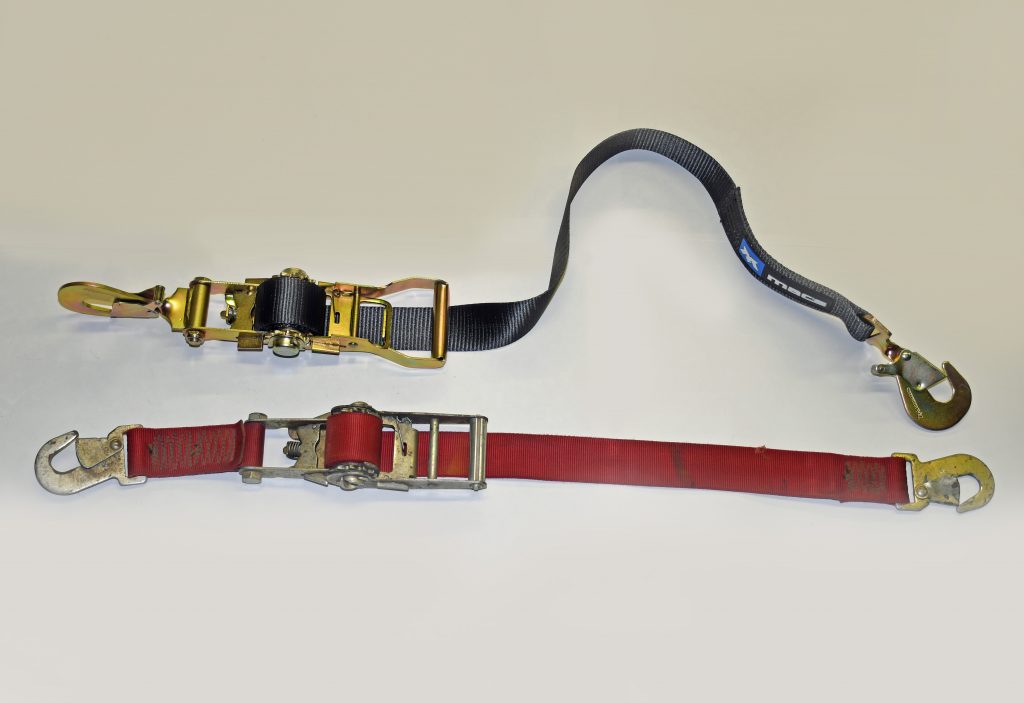
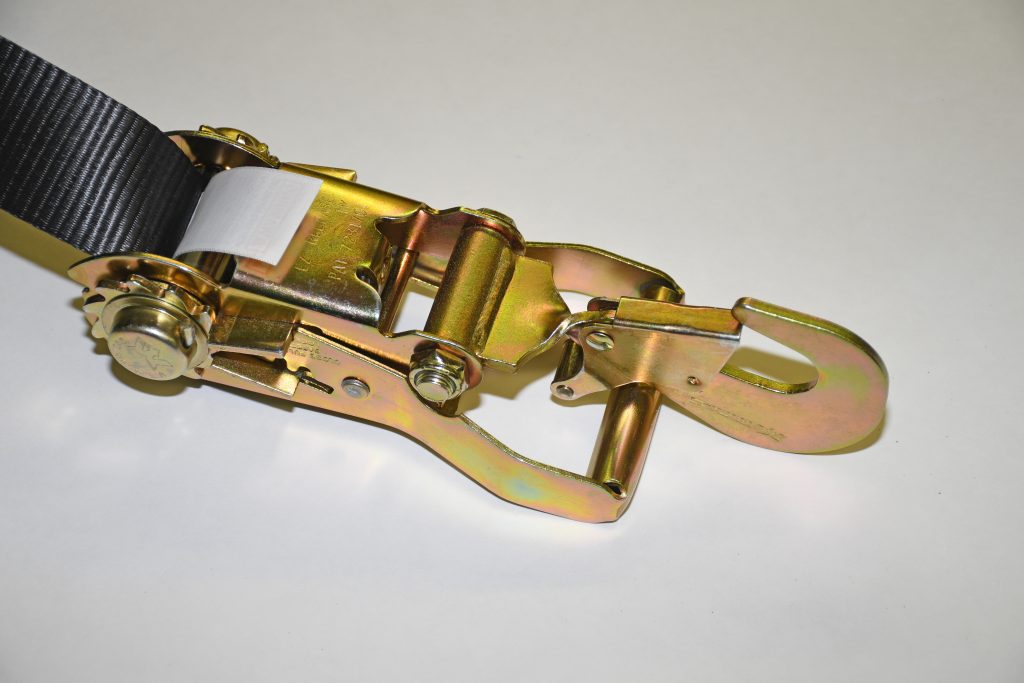
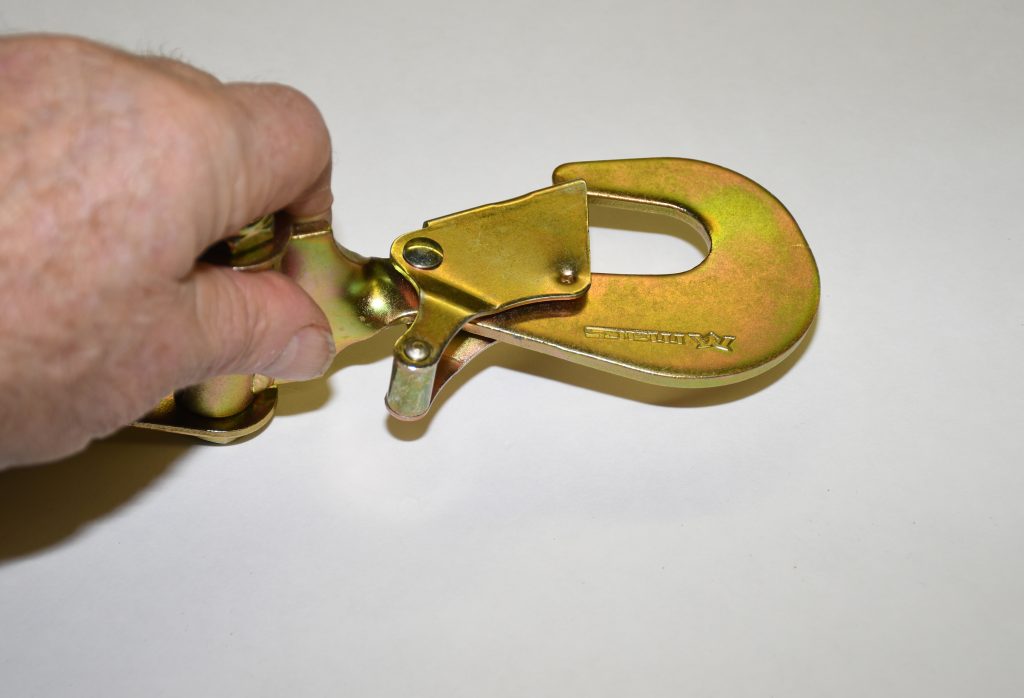
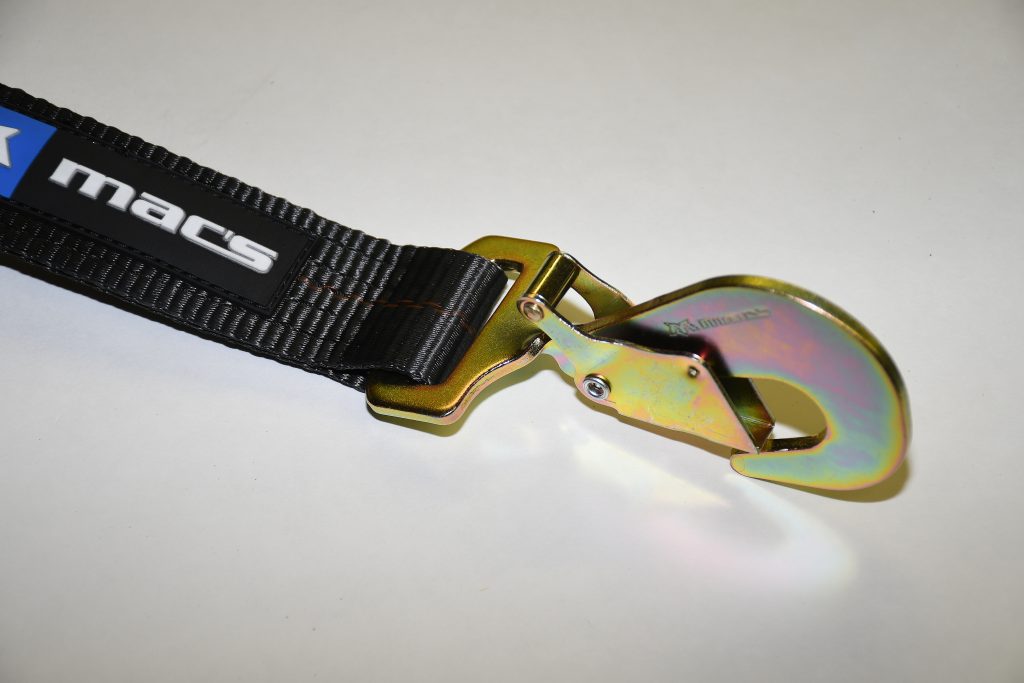
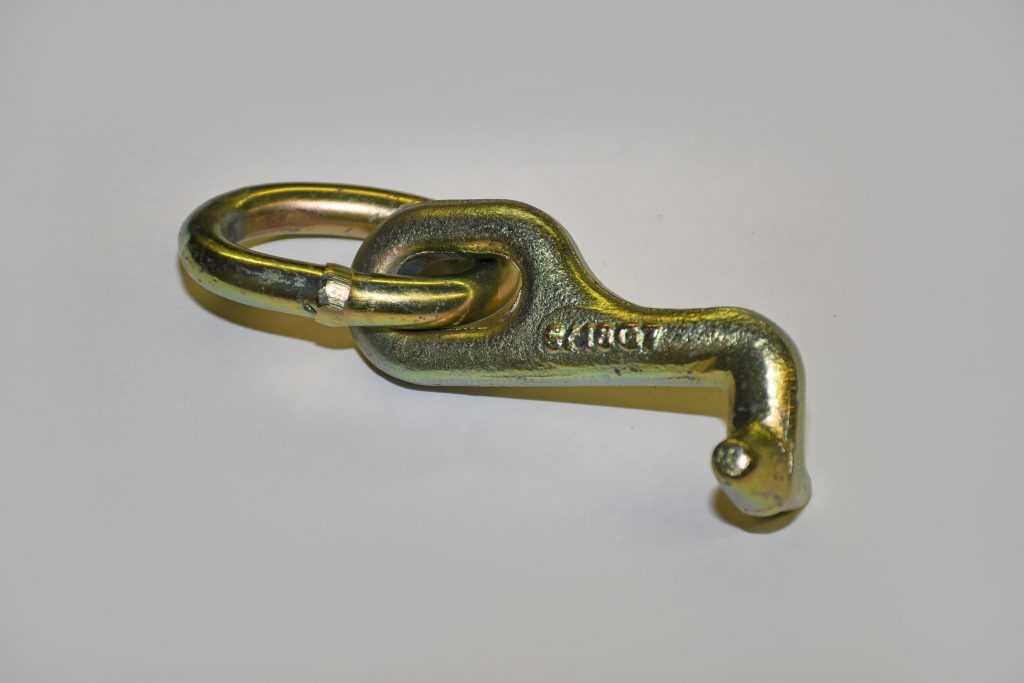
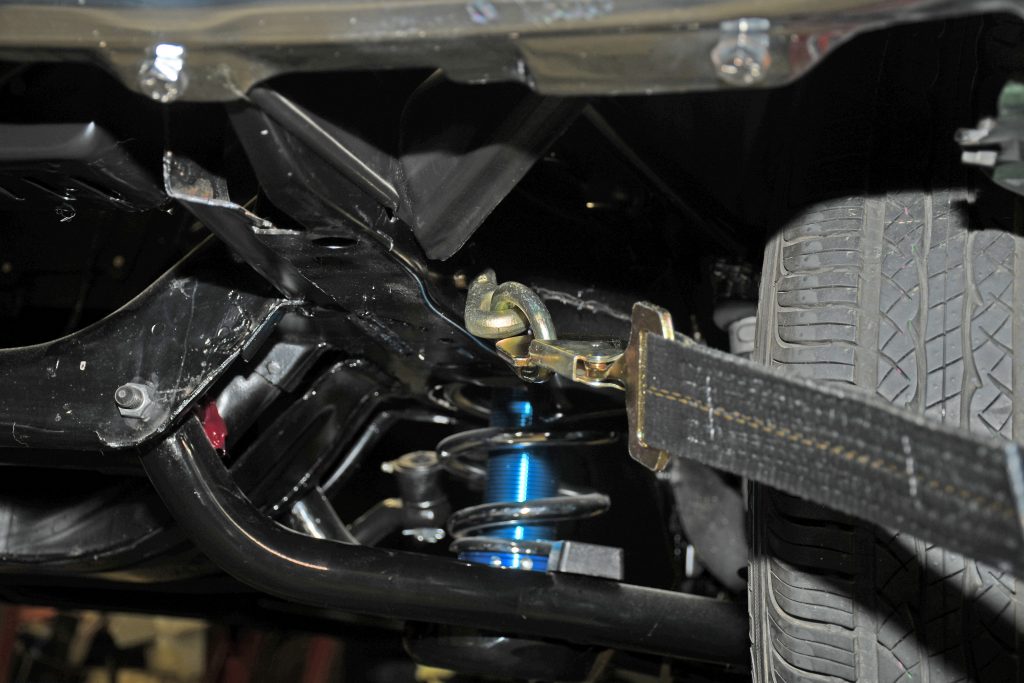
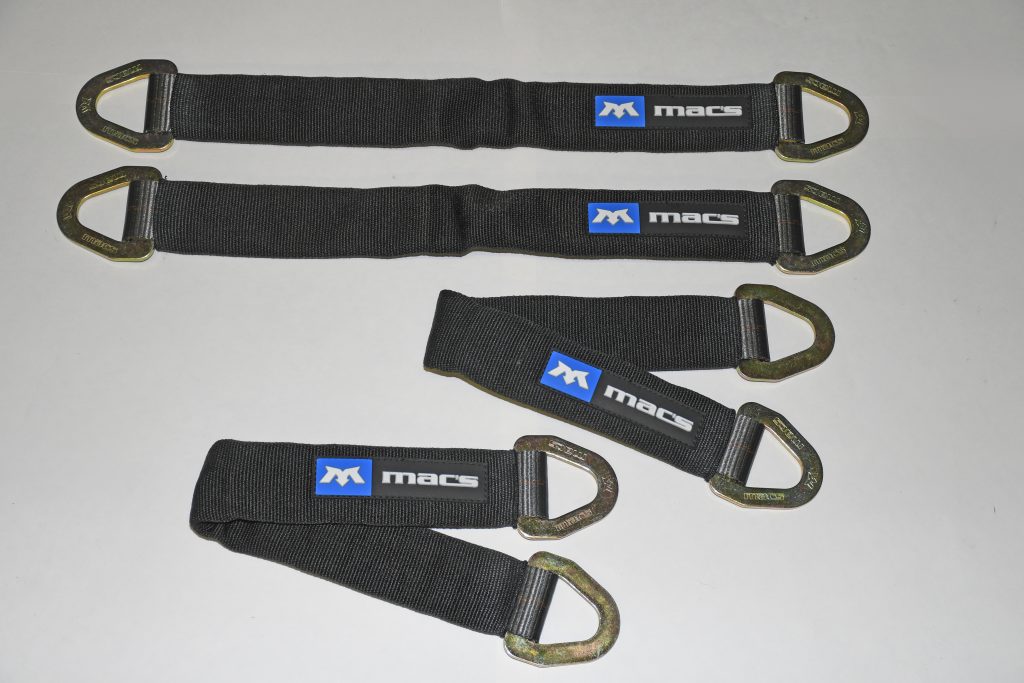
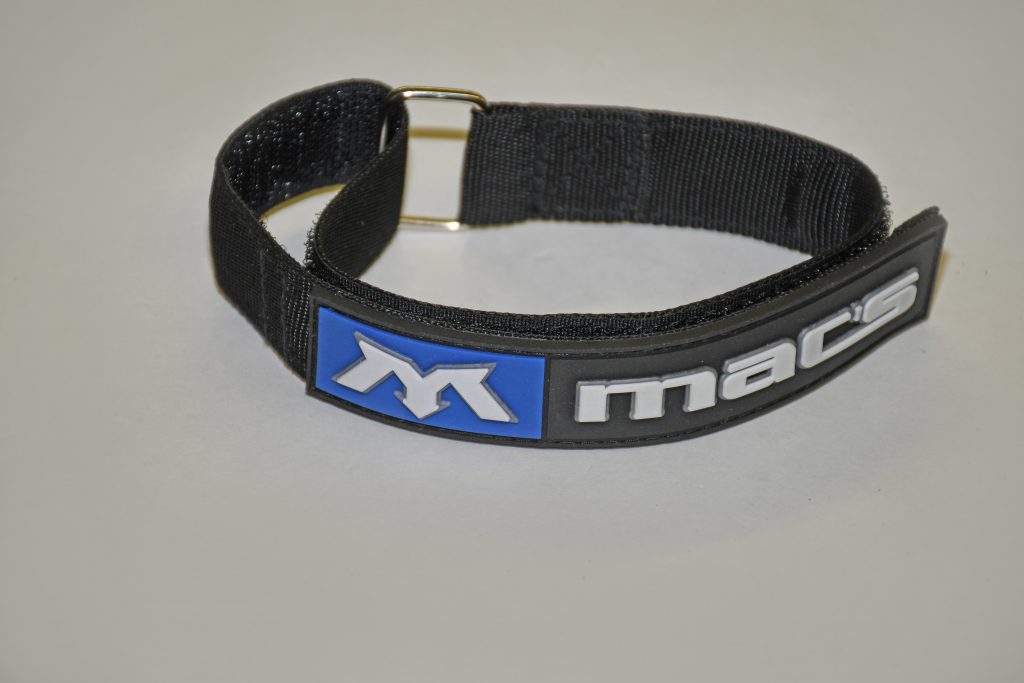
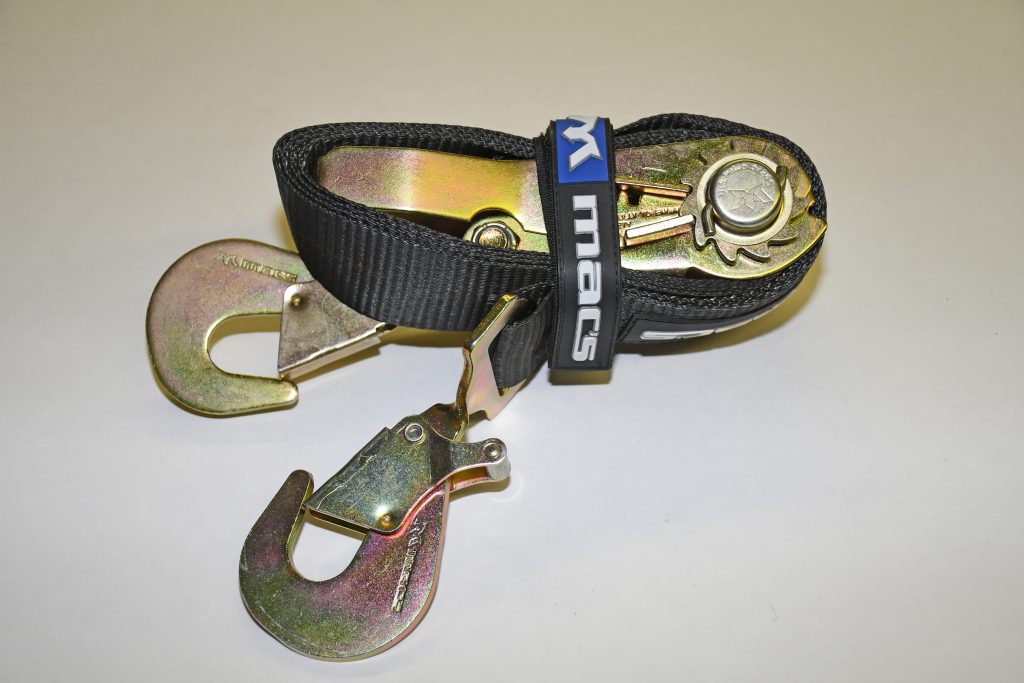
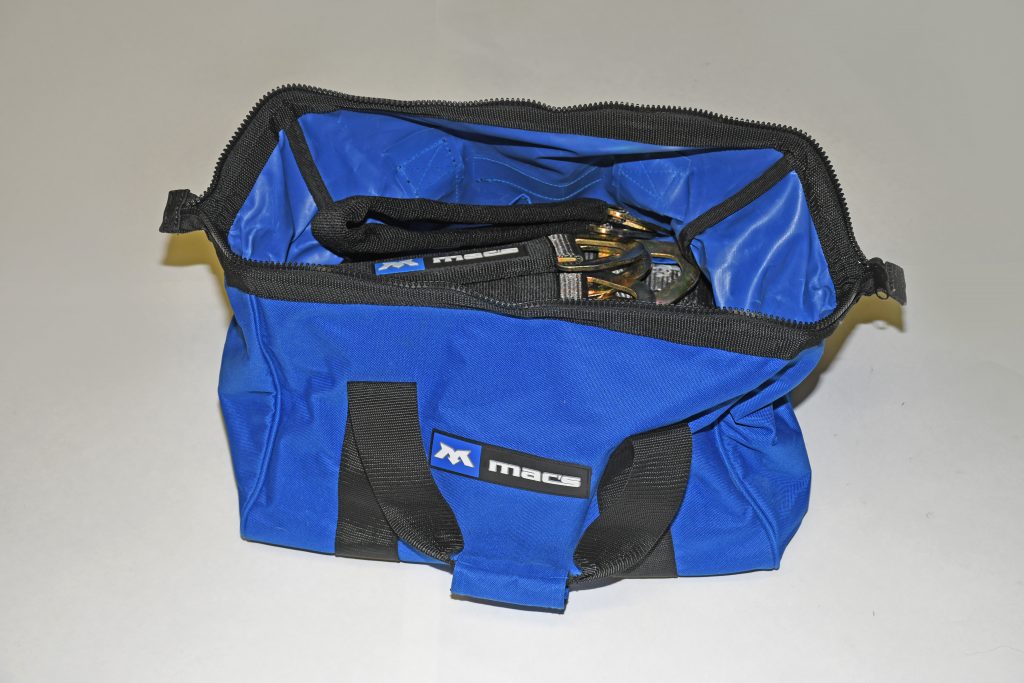

[…] You should always properly secure your vehicle anytime you trailer it to a race or event. It’s not just the smart, safe way to transport your ride, it’s a legal […] Read full article at http://www.onallcylinders.com […]